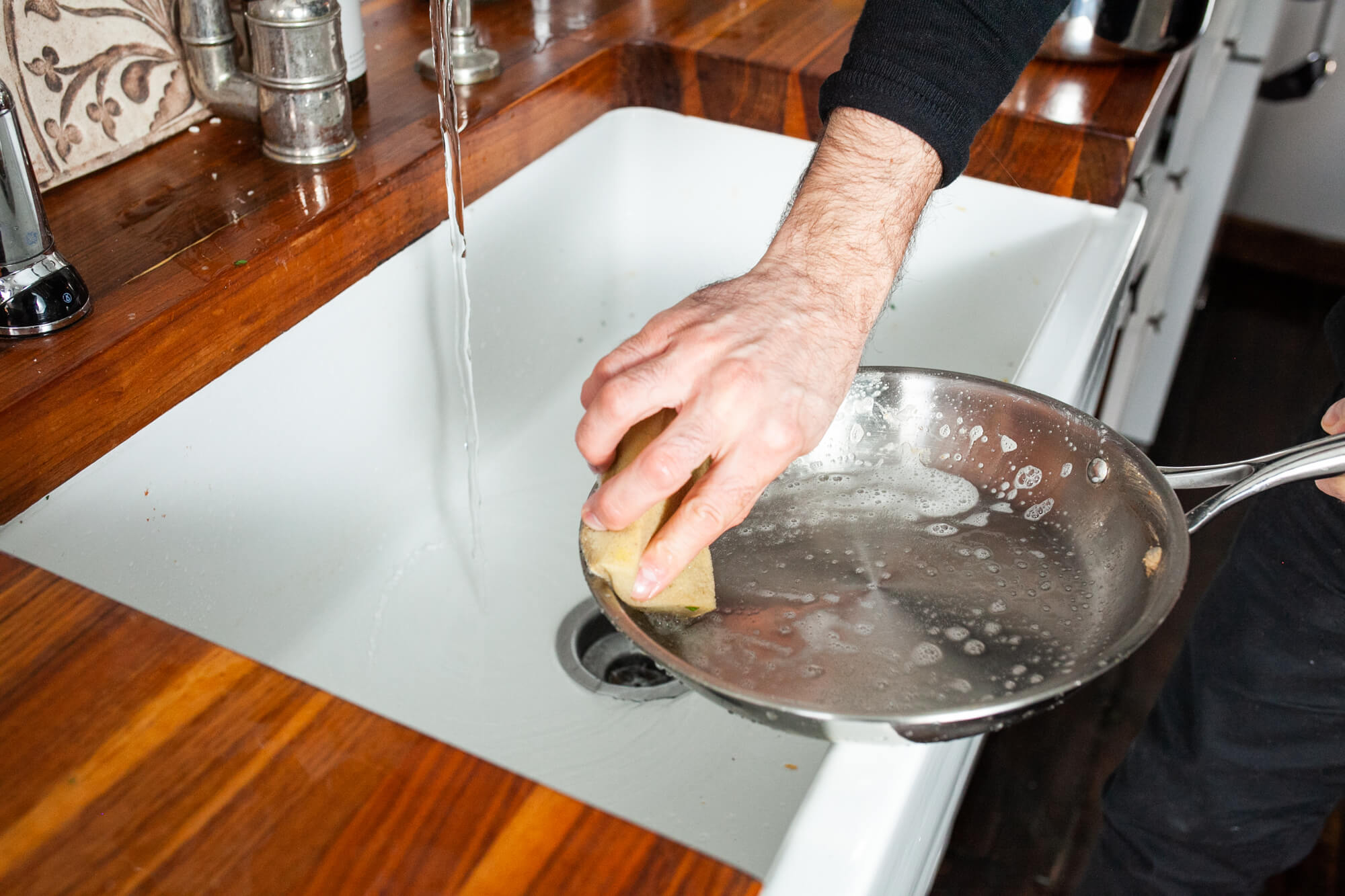
Shining Bright: Cleaning and Maintaining Stainless Steel Cookware
Has your once-shiny stainless steel cookware lost its out-of-the box glamour? Although these aesthetic changes won't affect the performance of your stainless steel cookware, stuck-on food, burnt bits, and stubborn stains can dull its sparkle. But here's the good news: reclaiming that original shine is not as hard as you might think.
Stainless steel pans are the reliable workhorses of our kitchens. They're tough and built-to-last, making them perfect for everyday home use. But they still need some care and attention from time to time. And with just a few common household items, such as mild dish soap, a soft sponge, baking soda, and vinegar, you'll be equipped with all you need to keep your stainless steel cookware looking good as new.
This article will explore how to best care for and restore your stainless steel cookware. We'll discover easy methods for everyday cleaning, and even tackle those rare but tougher challenges, like burnt stuck-on food and water spots.
We take pride in our commitment to quality and affordability. Partnering with a multi-generational, family-owned manufacturer in Italy, we've crafted cookware that blends classic design with high-quality materials, making top-tier cookware accessible to all.
Table Of Contents:
Understanding Stainless Steel Cookware
There are many options to choose from when selecting a cookware set. But stainless steel cookware stands out as one of the most sought-after and well-regarded options for the home. Here's why.
First, one of the hallmarks of stainless steel cookware is its durability. Unlike other materials, which might chip or wear down over time, your stainless steel pan will withstand heavy use without decreased performance. This makes it an investment worth making for both home cooks and professional chefs alike.
Stainless steel cookware also offers superior heat retention and distribution. Whether you're simmering sauces, searing proteins, or sautéing vegetables, these pots and pans ensure consistent heating across their surface, resulting in uniformly cooked meals every time.
Stainless steel cookware is also non-reactive. Ever had your tomato sauce taste slightly metallic after cooking? With a stainless steel pan, you won't have this issue, because the material doesn’t react with acidic or alkaline foods.
For these reasons, stainless steel cookware, like Sardel’s Italian-made premium range of stainless-steel cookware, is a great choice for the home.
How To Clean Your Stainless Steel Cookware
Cleaning your stainless steel pots and pans after use is essential. This will keep your cookware looking good and performing well.
Simple Cleaning Techniques
Most cleaning tasks can be accomplished with warm water and gentle dish soap. This mixture will loosen food bits and cut through grease, without damaging the pan. When combined with a non-abrasive sponge, like the Scotch-Brite Non-Scratch Scrub Sponge, stuck-on food will come right off.
Be sure to let your pan cool down before running it under water. Running a hot pan under cool water could cause it damage.
Deglazing for Effective Cleaning
Certain foods and cooking oils might get stuck on your pan and be too difficult to remove with water, soap, and a soft sponge. One effective method for removing stuck-on food bits from your pans is deglazing. This involves adding a bit of water and white vinegar (or lemon juice) to the pan, placing it on the stove over low heat, and letting it simmer. The heat will help loosen up any stubborn, crispy remnants from the meal you just cooked. You can then use a soft utensil, like a wooden spatula, to remove the stuck-on food bits.
After deglazing, let the pan cool down to room temperature before you start cleaning further with warm soapy water and a non-abrasive sponge.
If there's still some stubborn residue left even after scrubbing, don't be tempted to reach for that steel wool. Instead, make a paste using baking soda and water, which can be used as a gentle scrub on these tougher spots.
This regular routine should solve most cleaning tasks.
Dealing with Discoloration
If discoloration or hard water stains are giving you trouble, try using vinegar as an effective solution. Simply soak the stained area in undiluted white vinegar for about 15 minutes, and then rinse off under warm running water.
You might need a non-abrasive commercial cleaner, such as Bar Keepers Friend, for such tough spots. Always follow the manufacturer's instructions when using any cleaning product to avoid permanently damaging your cookware.
To deal with really stubborn stains or burnt-on residue, baking soda is another trusty ally.
Proper Care and Maintenance for Stainless Steel Cookware
Maintaining the longevity of your stainless steel cookware requires more than just effective cleaning. Let's talk about some essential tips.
Add Oil at the Right Time
Make sure that your stainless steel pan is heated properly before adding oil, which will allow you to create an adequate non-stick surface and prevent sticking and burning.
Cleaning After Use
Cleaning soon after use goes a long way. Remember not to shock hot pans by placing them directly under cold water, because this can cause them to warp and discolor. But once the pan has cooled down, the sooner you clean it, the better.
Avoiding Water Spots
Avoid water spots by drying your cookware thoroughly after washing rather than letting it air dry. A soft dish towel works best for this task.
FAQs About How to Clean Stainless Steel Cookware
What is the best way to clean stainless steel cookware?
Clean with warm, soapy water using a non-abrasive, soft sponge. For stubborn stains or burnt food, common household items like baking soda and vinegar will help.
How do you remove brown spots from stainless steel pans?
You can remove brown spots by making a paste of baking soda and water and applying it to the pan's surface and scrubbing gently.
How do I get my stainless steel pans shiny again?
To restore shine to your pans, apply some white vinegar directly onto the surface then wipe off with a soft cloth.
What not to use on stainless steel cookware?
Avoid harsh cleaners and abrasive cleaning tools, as they may scratch the surface of your cookware. Also steer clear of chlorine bleach, which could damage the finish of your stainless steel pots and pans.




